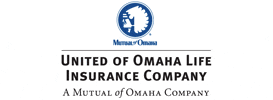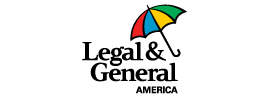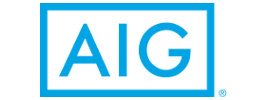Accidental Death Benefit:
This provides an additional death benefit if the insured dies as the result of an accident. There is an extra cost for this rider,
which is usually available up to $250,000 depending on the carrier, and cannot exceed the face amount of the policy. It is also available as an individual policy.
Accelerated Death Benefit Option:
In case of a terminal illness expected to cause the insured’s death (usually in l year or less), the insured has the option to receive some of the death benefit prior to death.
Depending on the company, this is typically 50% of the face amount or $250,000, whichever is less. The rider is initially provided at no cost, but once exercised,
a small administrative fee will usually will be charged and deducted from the amount accelerated. This rider is offered by most insurance companies.
Age:
Most insurance companies calculate age by using the age the insured is nearest to. For example, if the insured is age 45 and is applying in January,
and the insured's next birthday is in March, the insured would be considered age 46. However, carriers will usually allow a policy to be backdated in order to be issued at the younger age,
usually up to six months. Only a few carriers calculate by the insured’s actual birthday.
Annually renewable term (ART):
This type of term life insurance automatically renews every year and at an annually increasing price. Most level premium term products become annually renewable term after the initial level premium period is over.
They are generally renewable up to the age of 95 to 100.
Assignment:
The transfer of the ownership rights of a life insurance policy from one person to another party.
Aviation Hazard:
The extra hazard of death or injury resulting from participation in aviation activities. It usually does not include fare-paying passengers in a commercial aircraft.
This generally requires either paying an extra premium or waiving coverage in case of death while acting as a pilot or crewmember of an aircraft.
Backdating:
A procedure for making the effective date of a policy earlier than the application date, in order to issue the policy at a lower age and a lower premium.
State laws generally limit backdating of policies to six months.
Beneficiary:
The person or entity that will receive the proceeds (known as the death benefit or face amount) of a life insurance policy.
A policy can have multiple beneficiaries. If there is more than one beneficiary, the policy owner must state how the proceeds will be divided among them. The owner can also name a contingent beneficiary in case of the primary beneficiary’s death.
Business Insurance:
Policies written for business purposes, such as key employee, buy-sell, or business loan protection.
Buy-Sell Agreement:
A contract among owners of a business which provides terms for their purchase of a withdrawing partner’s interest in the business. In case of the disability or death of the partner, the funding vehicles are either disability and/or life insurance.
Cash Value:
Also known as policy value, this is the interest-earning cash component of a permanent life insurance policy, such as universal or whole life. The policyholder may be able to access the cash value in order to pay premiums,
or through a policy loan (which will accrue interest), or by surrendering the policy. If cancelled, surrender charges may apply to the cash value in the early years of a permanent policy, but only if any cash value exists.
There is no surrender charge if there is no existing cash value, and the policyholder will never in any event be required to pay any surrender charges out of pocket.
Children's Term Insurance Rider:
A child rider provides a death benefit to the insured parent upon death of any of the insured's dependent children. A flat premium is charged which includes all specified children equally.
Child riders are usually available between face amounts of $1,000 to $10,000 and may be purchased in $1000 increments.
Collateral Assignment:
The assignment of all or part of a life insurance policy as security for a loan. If the insured dies, the creditor would receive only the amount due on the loan.
Conditional Binding Receipt:
A conditional binding receipt will provide temporary coverage from the date of the application if a premium accompanies the application and once any required medical examinations have been completed.
It is conditional provided the insurer would have issued the coverage on the basis of the facts revealed on the application, the medical exam results and other usual sources of underwriting information.
This coverage is usually limited to the face amount of the policy or $1,000,000, whichever is less, and will continue until the policy is issued and delivered.
A life insurance policy without a conditional binding receipt is not effective until it is delivered to the insured and the premium is paid.
Contestable Clause:
An insurance policy provision detailing the conditions (normally suicide, fraud, or significant misrepresentation on the application) and the time period during which the insurer may contest or void the policy.
After that period, normally two years, the policy can no longer be contested.
Contingent Beneficiary:
A secondary beneficiary to a policy. The contingent beneficiary will only receive money from the policy if the primary beneficiary dies before the insured.
Convertibility:
This feature allows the owner of a term policy to exchange it for a permanent policy without evidence of insurability (i.e., no new medical questions or exams). There is a time limit to exercise his feature, usually within the initial term period or to age 65,
whichever comes first. The premium for the permanent policy will be higher than the term premium, but the new premium can usually be set at a fixed level amount anywhere from age 90 to 121. Just like term, permanent coverage cannot be cancelled except by the policyholder,
or in the event that premiums aren't paid.
Credit Insurance:
Insurance on a debtor in favor of a creditor to pay off the balance due on a loan in case of the death of the debtor.
Cross Purchase:
A form of business life insurance in which each party purchases life insurance on the other.
Death Benefit:
The amount the policy will pay to the beneficiaries when the insured dies. It may also be referred to as the face amount.
Decreasing Term:
A form of level premium life insurance that provides a decreasing death benefit throughout the term of the contract, reaching zero at the end of the term. This is rarely sold at present,
as level term insurance is comparatively much less expensive over an extended period of time.
Delivery:
The actual placing of a life insurance policy in the hands of an insured.
Double Indemnity:
Payment of twice the basic benefit in case of loss resulting from specified causes or circumstances, normally accidental death. Double indemnity is usually limited to only accidental death policies.
Entity Agreement:
A buy-sell agreement in which the company agrees to purchase the interest of a deceased or disabled partner.
Evidence of Insurability:
The statement of information needed for the underwriting of a new insurance policy. This usually will include a written application and paramed exam.
Examination:
The medical examination of an applicant for life insurance, usually a short paramed exam and provided at no charge to the applicant.
Examiner:
A physician, nurse, or paramed appointed by the medical director of a life insurance company to examine applicants.
Expiry:
The termination of a term life insurance policy at the end of its period of coverage.
Face:
The first page of a life insurance policy.
Face Amount:
The amount of insurance provided by the terms of an insurance contract (usually found on the face of the policy). In a life insurance policy, this is known as the death benefit.
Fixed Benefit:
A benefit, the dollar amount of which does not vary.
Flat Extra:
An extra charge added to the premium, usually stated as an additional cost per thousand dollars of coverage, due to either a particular health condition, impairment, occupation or avocation of the insured.
Free Look:
A period of time (usually from 10 to 30 days depending on the state) during which a policyholder may examine a newly issued individual life insurance policy,
and surrender it in exchange for a full refund of premium if not satisfied for any reason.
Incontestable Clause:
A clause in a policy providing that if a policy has been in effect for a given length of time (usually two years), the insurer will not be able to contest the statements contained in the application.
In life policies, if an insured misrepresented his health or health history on the application, that misrepresentation could not be used to contest payment of the policy if
death occurred after the time limit stated in the incontestable clause.
Insurability:
Acceptability to the insurer of an application for insurance.
Insurable Interest:
A person has an insurable interest in the insured’s life, if upon the death of the insured that person would suffer a financial loss due to the insured’s death.
Insurance:
A formal social device for reducing risk by transferring the risks of several individual entities to an insurer. The insurer agrees, for a consideration, to pay for the loss in the amount specified in the contract.
Insurance Policy:
The printed form which serves as the contract between an insurer and an insured.
Insured:
The person whose life is covered by the policy and whose death will trigger the payment of the death benefit to the beneficiary. It is the insured whose health, driving record, etc. will be examined during the underwriting process.
The insured and the owner are usually the same person, but may be separate individuals.
Insurer:
The company that pays out a death benefit should the insured die.
Irrevocable Beneficiary:
A beneficiary that cannot be changed without his or her consent.
Key Person (Key Man) Insurance:
Insurance on the life of a key employee whose death would cause the employer financial loss. The policy is owned and payable to the employer.
Lapsed Policy:
An insurance policy which has expired due to nonpayment of premiums. In a cash value life insurance policy such as whole life or universal life, the policy could expire because the cash value account has reached a zero balance and
no premium payments are being made to replenish it.
Level Term Insurance:
The most popular type of term life insurance policy, normally with a face amount and rates that remain level and guaranteed for the period stated – usually 10, 15, 20, or 30 years. Should the policyholder keep the policy beyond the end of the initial term period,
an annually renewable term rate schedule goes into effect with higher yearly increasing premiums thereafter. At that point, the insured may choose to either cancel, apply for a new policy, or convert the policy to a permanent plan.
Life Expectancy:
The average number of years remaining for a person of a given age and gender to live as shown on the mortality or annuity table used by an insurer to calculate life insurance rates.
Life Insurance:
A contract between and insurer and an insured that guarantees the payment of a stated amount of monetary benefits upon the death of the insured.
Medical Information Bureau (MIB):
A data service that stores coded information on the health histories of persons who have applied for insurance in the past from companies subscribing to the MIB. Most life insurers subscribe to this bureau to obtain more complete underwriting information.
Mortality Charge:
The charge for the element of pure insurance protection in a life insurance policy.
Mortality Cost:
The first factor considered in life insurance premium rates. Insurers have calculated the probability that any given person will die at any particular age; this is the information shown on a mortality table.
Mortality Rate:
The number of deaths in a specific group of people, usually expressed as deaths per thousand.
Mortality Table:
A table showing the incidence of death at specified ages.
Mortgage Insurance:
A life policy covering a mortgagor from which the benefits are intended to pay off the balance due on a mortgage upon the death of the insured. The best way to accomplish this is through level term life insurance.
Non-medical (Non-Med):
A life insurance contract underwritten based on an insured's statement of his health with no required medical examination.
Not Taken:
Policies applied for and issued but rejected by the proposed owner and not paid for.
Occupational Hazard:
A condition within an occupation that increases the peril of accident, sickness, or death, for which a higher premium will be charged.
Ownership:
The person, entity or trust that owns a life insurance policy. All rights, benefits and privileges under life insurance policies are controlled by their owners. Policy owners may or may not be the insured.
Ownership may be assigned or transferred by written request of current owner. The owner is responsible for paying the premiums and has the right to name and change any beneficiaries.
Permanent Life Insurance:
A policy designed to last the lifetime of the insured, usually with a fixed level premium, as opposed to term policies with a fixed number of years. This premium may or may not be guaranteed for the life of the policy.
Types of permanent life insurance include Whole Life, Universal Life and Variable Life. Permanent policies usually generate a cash value and are usually much higher in cost than a term insurance policy.
Policy:
A contract between the owner of a life insurance policy and the insurance company, by which the company agrees to pay a death benefit when the insured dies.
Policy Fee:
The policy fee is a flat administrative charge which is included in every life insurance policy. The insurer uses this fee to pay for administrative expenses pertaining to the policy, including the free paramed exam provided to an insurance applicant.
The policy fee is usually the same for all ages and face amounts.
Pre-authorized Check Plan:
A premium-paying arrangement by which the policy owner authorizes the insurer to draft money from his or her bank account for the payments. This is done on a monthly basis.
Preferred Risk:
Any risk considered being better than the standard risk on which the premium rate was calculated. Many companies now offer several degrees of preferred rates with increasingly lower costs depending on the health of the applicant.
Premium:
Payments made to the insurance company to place and keep a life insurance policy in force. Premium payments are typically made annually or monthly, although semi-annual and quarterly payments are also available.
They can be made by check, credit card or bank draft, depending on an insurance company's guidelines.
Primary Beneficiary:
The primary beneficiary will receive the death benefit of the policy should the insured die. More than one primary beneficiary may be named, who will then share in the proceeds equally unless the owner specifies a different percentage.
A contingent beneficiary may also be named, who would then receive the policy proceeds should the primary beneficiary die before the insured. One or more persons can be named as a primary or contingent beneficiary.
Provisions:
Statements contained in an insurance policy explaining the benefits, conditions and other features of the insurance contract.
Rated:
Coverage issued at a higher rate than standard because of a particular health condition or impairment of the insured.
Renewable Term:
Term insurance that may be renewed for an additional period of time (usually one year) without evidence of insurability. Level term usually turns into annually renewable term with increasing premiums after the level premium period has ended.
Replacement:
A new policy written to take the place of one currently in force.
Return of premium (ROP):
This type of term life insurance returns all premiums that have been paid at the end of the level premium period. Many carriers will exclude premiums paid for riders or any extra charges for higher-risk clients.
ROP policies may pay a partial premium return if the policy is cancelled before the end of the initial level period. Because of this feature, an ROP policy is more expensive than a regular term policy.
Revocable Beneficiary:
The beneficiary in a life insurance policy in which the policy owner reserves the right to revoke or change the beneficiary. Most policies are written with a revocable beneficiary.
Rider:
Coverage or benefits that are added to the base policy, usually at an additional expense. Examples include child riders, which provide a death benefit if a child of the insured should die; accidental death benefit riders,
which pay extra if the insured's death is the result of an accident; and waiver of premium riders, which continue to pay the policy premiums should the insured should become totally disabled.
Standard Risk:
A standard risk is based on a common average in the areas of health, physical condition and lifestyle, and is insurable at standard premium rates. A standard class was once the best rate class available,
but as underwriting improved insurers were able to define those in better than average health and offer them better rates through a preferred rate class. With more underwriting refinement, insurers have now developed an even wider range of preferred rate classes.
Stock Purchase Agreement:
A formal buy-sell agreement whereby each stockholder is bound by the agreement to purchase the shares of a deceased stockholder and the heirs are obligated to sell. This agreement is usually funded with life insurance.
Stock Redemption Agreement:
A formal buy-sell agreement whereby the corporation is bound by the agreement to purchase the shares of a deceased stockholder and the heirs are obliged to sell. This agreement is usually funded with life insurance.
Term Life Insurance:
Term life insurance is designed to pay a benefit in the event of the death of the insured during a specified period of time, usually 10, 15, 20, or 30 years. Premiums are usually level and guaranteed during the initial term period. However, at the end of the term,
the policy does not automatically end. An annually renewable term rate schedule then goes into effect with higher annually increasing premiums until the policy expires, typically upon reaching the age of 95 or 100.
Underwriting:
The process by which a life insurance company decides whether or not to accept the risk of issuing a policy on an applicant. An underwriter will review the information on the application along with the results of the physical exam,
and at that point order any additional information needed (such as doctor’s records or a motor vehicle report) to determine whether or not to offer coverage, and at what particular risk class.
Universal Life:
Universal life is an interest-sensitive permanent insurance policy. Since these policies are designed to stay in force for the life of the insured, they are often more expensive than a term plan, although there is greater policy flexibility as well as cash value accumulation.
However, this flexibility comes at a price, and there are several variables that can adversely affect premiums: how much premium is paid and when, the assumed interest rate, and the policy’s cash value. With enough cash value built up it’s possible to pay less than the initial planned premium, or even skip a payment,
but this will affect either the cash value and/or the duration of the policy. One may also pay more than required in order to increase the cash value, which may then be later used to pay premiums. Cash values also may be accessible via a policy loan, or at policy surrender.
However, cash values will be affected by any changes to the policy’s initial assumed interest rate, which may vary. Should it decrease, the cash values will also decrease, requiring higher premiums to keep the policy from lapsing. Historically this has occurred after initially high assumed interest rates dropped dramatically,
causing the policies to significantly underperform.
Additionally, mortality charges will also increase as the insured ages, which will eventually either reduce the cash value or policy length, or increase premiums. Although a guaranteed minimum interest rate and maximum mortality rate schedule is stated in the policy,
most policies are not sold based on these assumptions due to the increased cost, approaching that of a whole life policy.
A guaranteed universal life policy solves many of these problems, as they are calculated by using long-term estimates of mortality, costs and interest. However, policy flexibility and cash value build up (if any) is minimal.
Variable Life Insurance:
Variable life is another form of permanent life insurance that permits premium payments to be allocated into various investment pools provided by the insurer, such as stocks, bonds, money markets or mutual funds. The policyholder may allocate the premiums as they see fit,
depending on how much risk they are willing to assume in the hope of higher cash values. The policy value reflects the performance of these selected investments, similar to the stock and bond markets, and with similar risks. Although there is a guaranteed minimum benefit payment for traditional variable life policies,
most universal variable life policies do not, and should investment experience be poor, much higher premium payments may be needed in order to avoid lapsing the policy.
Waiver of Premium:
A rider which may be added at cost to a life insurance policy, which continues the coverage without any further premium payments should the insured become totally disabled.
Whole Life Insurance:
Like universal life, traditional whole life insurance policies are designed to be kept in force for the insured’s entire life. Rates are calculated by using long-term estimates of mortality, costs and interest. Unlike universal life, whole life policies have these factors built into the policy, guaranteeing premiums,
cash values and duration as long as the scheduled premiums are maintained. However, these guarantees make whole life not only more expensive than universal life, but significantly more expensive than term life insurance.
To get a free quote now, click here or call
1-855-244-1993
Mon through Fri 6:00am to 6:00pm PST and Sat 7:00am to 4:00pm PST.























